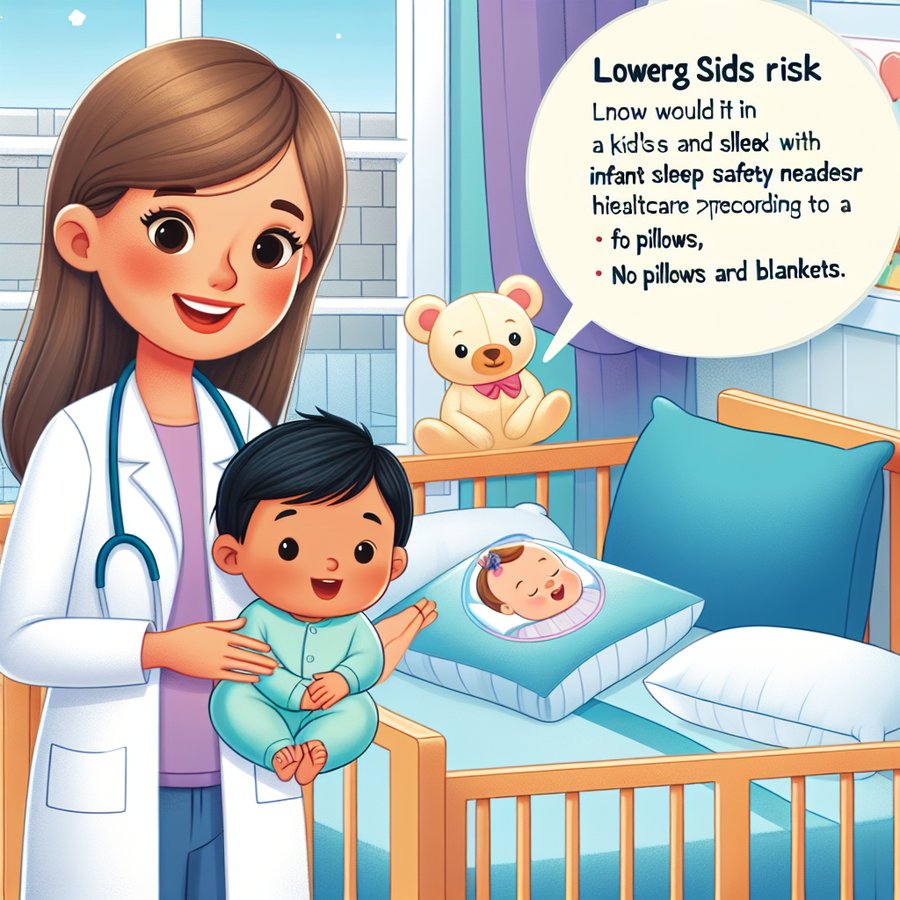Reducing the risk of SIDS in newborn sleep arrangements is a paramount concern for new parents and caregivers. By understanding and implementing specific sleeping practices, the likelihood of Sudden Infant Death Syndrome (SIDS) – a syndrome that causes unexplained death in babies less than a year old – can be significantly reduced. This guide offers a comprehensive look at measures to safeguard your infant during sleep, combining scientific research with practical advice.
The Critical Importance of Safe Sleep Practices
Creating a safe sleep environment is the foundation of reducing the risk of SIDS in newborn sleep arrangements. The American Academy of Pediatrics (AAP) recommends that infants sleep on their backs on a firm, flat surface without any soft bedding, pillows, toys, or crib bumpers. This position and environment minimize the risk of suffocation and overheating, which are associated with SIDS.
Moreover, ensuring that the baby sleeps in the same room as the parents for at least the first six months, as suggested by the AAP, has been shown to decrease the risk of SIDS. This proximity allows parents to monitor their baby more closely and respond to their needs promptly. For more in-depth guidance, visit how to establish a sleep schedule for a newborn.
Reducing the Risk of SIDS in Newborn Sleep Arrangements
Reducing the risk of SIDS in newborn sleep arrangements goes beyond the sleep environment itself. It encompasses a holistic approach that includes breastfeeding, use of a pacifier, and avoiding exposure to smoke. Breastfeeding has been associated with a lower risk of SIDS, while the use of a pacifier during sleep can reduce the risk by keeping the airways open. Additionally, keeping the baby’s environment smoke-free is crucial, as exposure to smoke doubles the risk of SIDS.
Another critical factor is the sleepwear and bedding. Choosing the right sleepwear, such as a well-fitting, appropriate tog sleeping bag, can keep the baby at a comfortable temperature without the risks associated with loose blankets. For options on safe sleepwear, check out choosing the right sleepwear for your baby’s comfort. Additionally, ensuring the crib mattress is firm, fits snugly in the crib, and is covered with a fitted sheet is essential for reducing SIDS risk. More tips can be found at best mattresses for infant safety and comfort.
Innovative Strategies and Continuing Research
As research into SIDS continues, new strategies and recommendations emerge. For instance, the use of smart technology in baby monitors that can track sleep patterns and vital signs is gaining popularity among parents. While not a substitute for direct supervision, these devices can provide additional peace of mind.
Furthermore, ongoing studies are exploring the genetic factors that may predispose infants to SIDS, with the aim of identifying at-risk babies early on. For the latest research and innovative solutions to reduce the risk of SIDS, visiting authoritative sources like the Safe to Sleep campaign by the National Institute of Child Health and Human Development can provide valuable insights.
In conclusion, reducing the risk of SIDS in newborn sleep arrangements requires a multifaceted approach that includes creating a safe sleep environment, practicing safe sleep habits, and staying informed about the latest recommendations and research. By adhering to these guidelines, parents and caregivers can significantly lower the risk of SIDS and ensure a safer sleep setting for their infants. For further reading, exploring how to reduce the risk of SIDS with appropriate sleep positioning offers more targeted advice on this critical topic.













